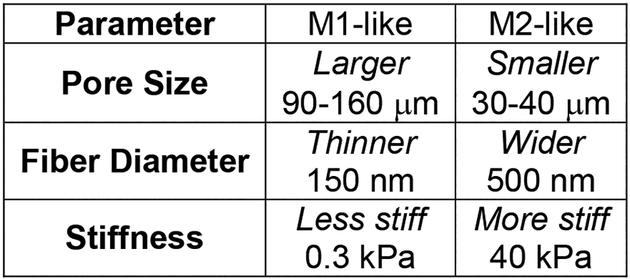Figure 7.
The properties of implantable scaffolds modulate local macrophage response. Larger pore size, thinner fibers, and less stiff materials promote M1-like macrophage polarization. Smaller pore size, wider fibers, and stiffer materials promote M2-like macrophage polarization. Understanding how implant architecture affects macrophage polarization and activity can guide the design of new cancer therapeutics.

